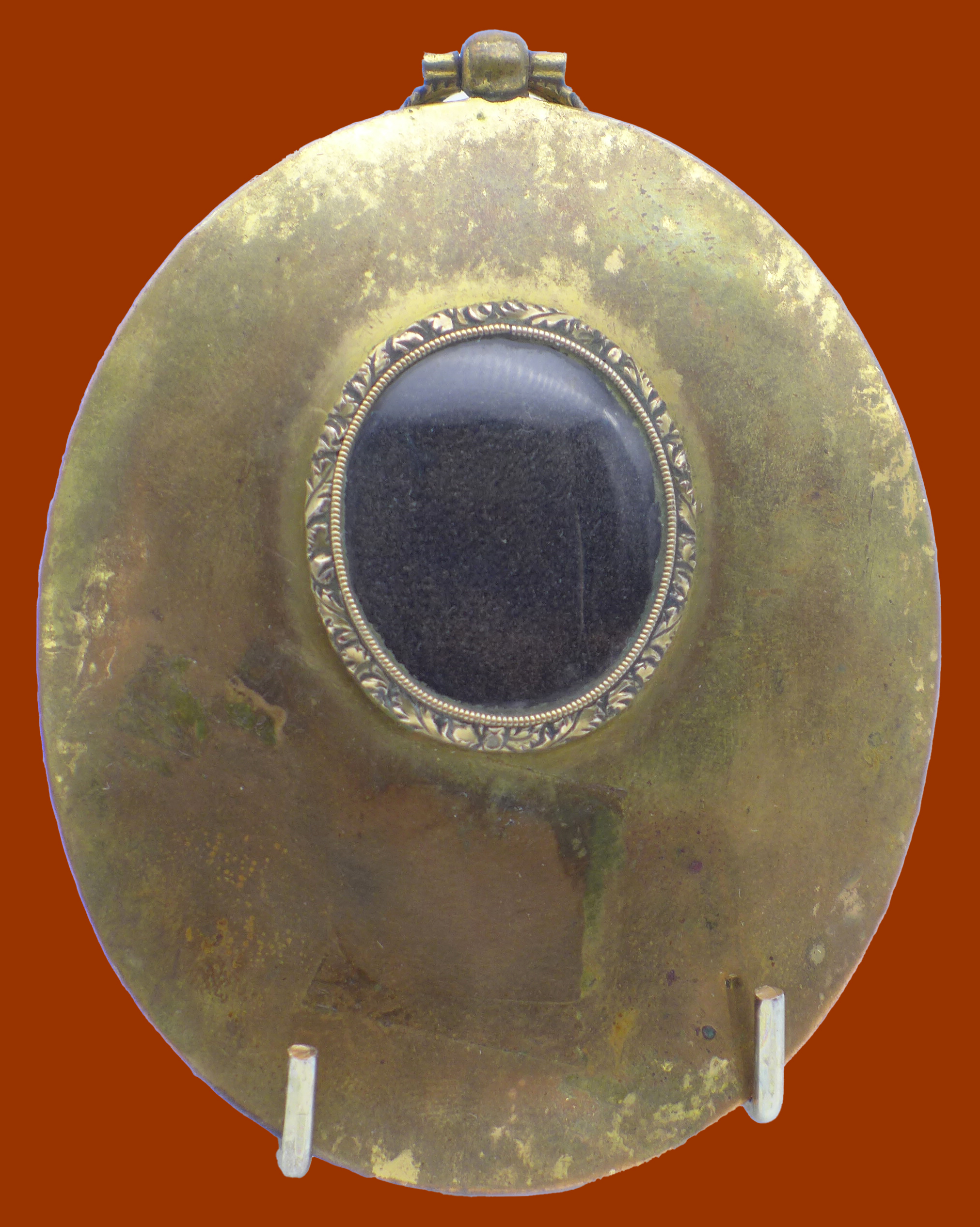
Offered is a great portrait miniature very representative of the work of Abraham Parsell (1791-1856). Parsell was born in Neshanic, New Jersey. Little is known of his beginnings as an artist, including whether he had some training or was completely self-taught. Parsell moved his family to New York City where he showed up in business directories as a miniature painter as early as 1820.
This gentleman is one of Parsell’s later works, depicting the sitter’s hands with long elegant fingers, and holding a book—earlier works didn’t not show the hands. This gent also has his arm casually laid on the wood chair back. Characteristic of Parsell’s work, the gent has pronounced eyelids, penetrating eyes, and is set against a stippled background. Like most of Parsell’s works, the sitter is elegantly dressed and wears what appears to be a diamond stickpin. This gent is more of a dandy than most with the wonderful curve that Parsell has given his jacket and waistcoat.
Although we know nothing about Parsell’s art education or training, his work shows a strong understanding of the ivory substrate of his portraits. He meticulously prepared the surface of the ivory by scoring a succession of lines, barely visible to even magnification. This preparation helped secure the paint to the surface and allows us to have his 170-plus-year-old portraits in remarkably good condition. Another practice showing Parsell’s understanding of how to make the ivory work to elevate the work is his practice of painting part of the reverse of the translucent medium in tones of blues, reddish brown, and orange to create muted tonality to the background. If you look closely at this portrait you can barely see that Parsell used blue on the reverse to extend a shadow behind the sitter’s collar. Above the head, you can see that he used brown and orange to create an aura-like interest to upper background. I have always been fascinated by Parsell’s use of the reverse to add interest to the front. Since most miniature painters glued the ivory to larger paper so that it could be painted without touching the paint, it was not possible to paint the back. Once an artist finished the miniature, she generally cut the excess paper away and sometimes signed the paper.
Like most of Parsell’s work, this portrait is oval and set into a chased metal pendant style frame with a small oval aperture in the back for a keepsake of hair. The condition of the package is really lovely—no issues with the portrait or the pendant frame except for expected discoloration on the back where the gilt has worn down by being touched and held with a loving hand. The hair aperture does not contain hair but a black, thickly-woven fabric that almost looks like plaited hair. The whitish area at the bottom of the portrait is reflection that I can't seem to avoid because of the convex glass. Circa 1835.
#6800 Sold
Please see the Folk Portrait Artists page for more information about Abraham Parsell.

